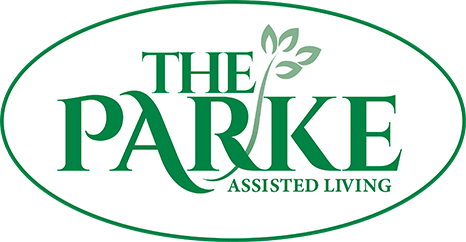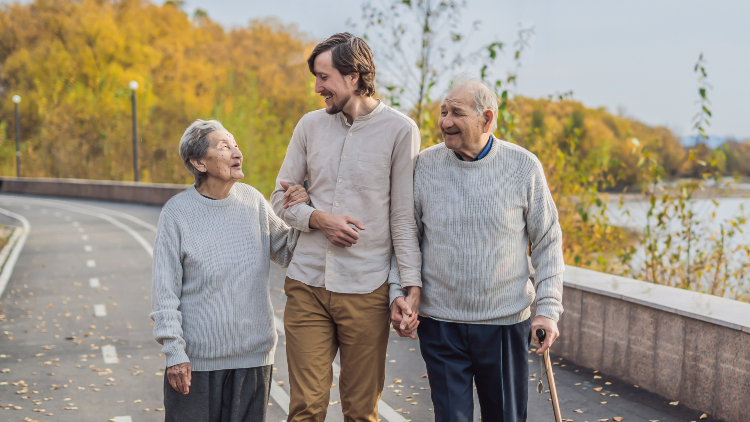How would you like to decrease your risk of falling, improve your brain function, and maximize your independence as a senior? Regular physical activity benefits you in these areas and more. As seniors, the more we move, stay active, and exercise, the better our quality of life will be. It not only improves our physical health, but also our mental health.
Benefits of Regular Exercise for Seniors
Here are some benefits of physical activity for those over 65.
1. Reduce your risk of chronic disease.
Prevent or delay the possibility of things like high blood pressure, stroke, type 2 diabetes, or breast cancer.
2. Improve your immune function.
Too many elderly people have a compromised immune system, which can lead to difficulty getting over symptoms of a cold. Boost your immune function with regular exercise, and you’ll bounce back quicker from things like colds.
3. Lower your chance of injury.
When you keep your body strong, you’re less likely to injure it. If you use your back muscles as you garden, ballroom dance, or swim, you may contribute to preventing back injuries.
4. Improve your mood and overall mental health.
The mental health benefits of exercise abound because it produces endorphins (which act as stress relievers and make you happy). Lessen symptoms of depression by exercising regularly.
5. Improve your sleep.
Too many elderly people suffer from insomnia and disrupted sleep patterns. Get some exercise each day, and watch how it impacts your sleep positively.
6. Lower your risk for getting osteoporosis.
Enhance your bone health by exercising regularly.
7. Decrease your risk of falling.
This is super important because of how difficult it is to recover from a fall. Why not prevent falls by exercising? When we exercise, our strength and flexibility increase, and that helps improve our balance and coordination, which reduces our risk of falling.
8. Stay independent longer.
Exercise helps you increase your functional health. The more you move, the easier it is to move. As we get moving, we ensure our independence because we’re up to the functional tasks it takes to live.
9. Improve your flexibility.
Staying flexible can help you stay independent longer, and exercise such as yoga can help your body stay flexible.
10. Improve your quality of life.
Increase your life expectancy and improve the quality of your life by exercising regularly.
How the Social Aspect of Exercise Helps Us Stay Connected to Others
Exercise has both physical and psychological benefits. The social aspect of exercise can create strong bonds with others, and give you purpose and satisfaction about life. Prioritizing exercise can benefit us socially and boost our confidence. Create the habit of exercising, and watch the benefits roll in over time.
Exercise helps you exchange the feelings of loneliness or depression for a sense of community, belonging, and joy. Join a walking club, a fitness class (like Senior Sneakers), or a gardening club to create social bonds and get active at the same time. When you engage in an activity you love, it will make it fun and keeps you involved long-term.
How to Stay Mobile and Independent as a Senior
As we grow older, our overall muscle mass decreases. After the age of 40, we lose as much as 3-5% of our muscle mass per decade. Muscle contributes significantly to our ability to balance (and prevent falls). Strong muscles keep us strong and increase our bone strength. Without muscle strength, our mobility and independence could be compromised.
How Exercise Impacts Our Brain
Interested in lowering your risk for dementia by 35%? It’s easier than you might think. Just start walking three or more times a week, and you can lower your dementia risk significantly. Exercise improves cognitive function. Brain neurons—the cells that help you think and improve memory—increase with regular physical activity.
Consistent Exercise Is More Important than Intensity
It’s never too late to get started exercising. Focus on what you can do rather than what you can’t do. Use what you have so you don’t lose what you have when it comes to exercise. Understand that increased mobility is directly impacted by regular exercise. Rather than lifting heavy weights or striving to walk with too much intensity (and possibly injuring yourself), simply find a physical activity you enjoy doing, and do it at a comfortable level that you can maintain.
Exercise Recommendations and Precautions for Seniors
Before beginning an exercise program, check with your doctor. If you have a health condition like cardiovascular disease or diabetes, you may need to take extra precautions and seek medical advice before beginning an exercise program. Activity level should be gauged based on your exercise capacity, health risks, limitations, and doctor’s recommendation.
If You Are Currently Inactive
The beauty of physical activity for seniors is that it helps all of us relative to our current lifestyle. So, if you are presently inactive, and you simply go from “no activity” to “some activity” you will improve your overall health as a result. Start off slowly, and increase your activity little by little. You can begin to improve your movement duration, then the frequency of activity, and finally the intensity of your activity.
How Much Physical Activity Should I Aim For?
Healthy adults over 65 should aim for 150 minutes of activity/exercise per week.
- Beginner—150 minutes of activity can be achieved by the accumulation of short bouts of at least 10 minutes of physical activity throughout the week.
- Intermediate—Work up to 30 minutes of physical activity 5 times a week, and you’ve achieved your goal of 150 minutes weekly.
- Advanced—Once you accomplish 30 minutes of exercise 5 times a week, increase your intensity during those 30 minutes.
The Parke is a licensed assisted living facility in Tulsa that offers seniors a beautiful, safe, caring community with an abundance of physical activities to enjoy. Join us for a healthy meal in our dining room, and take a tour.

